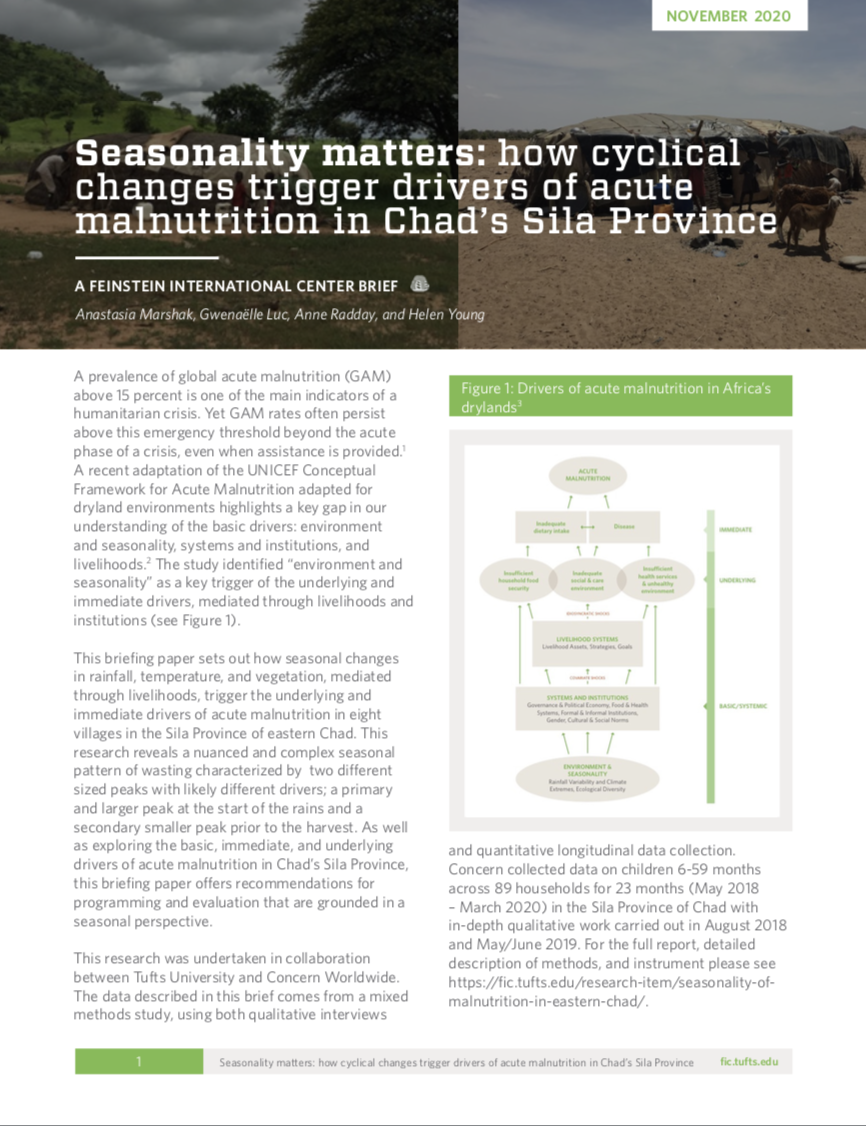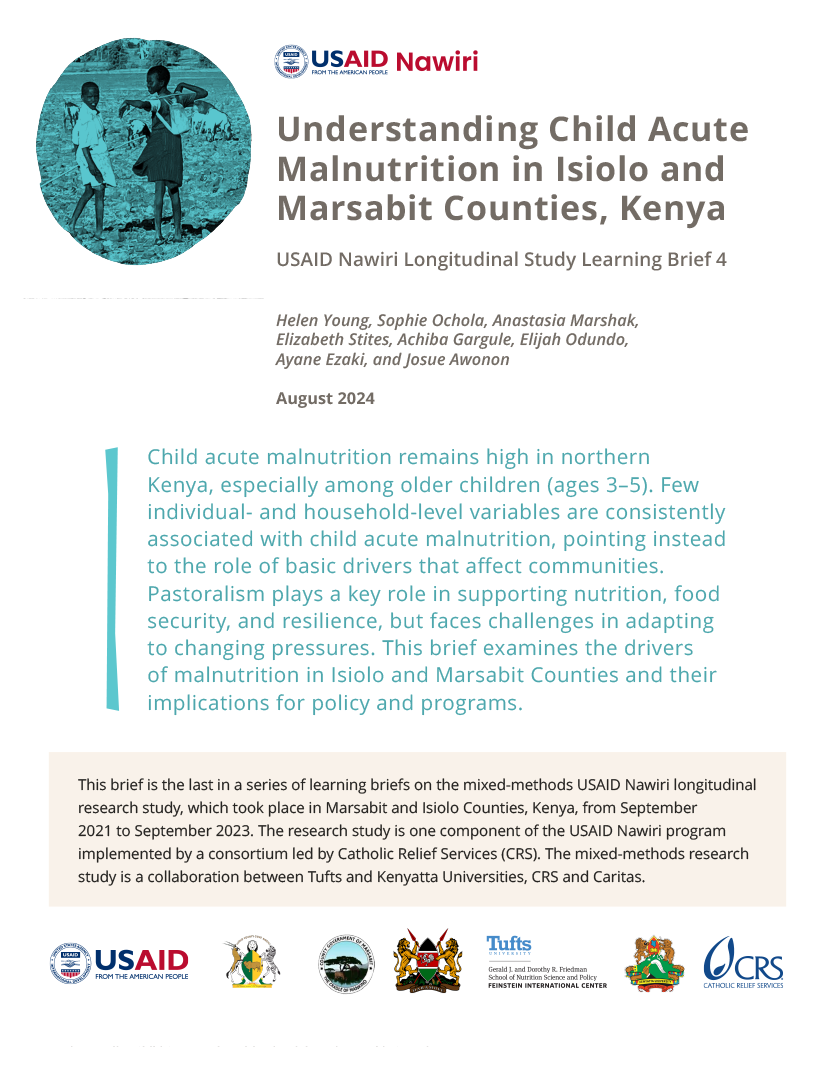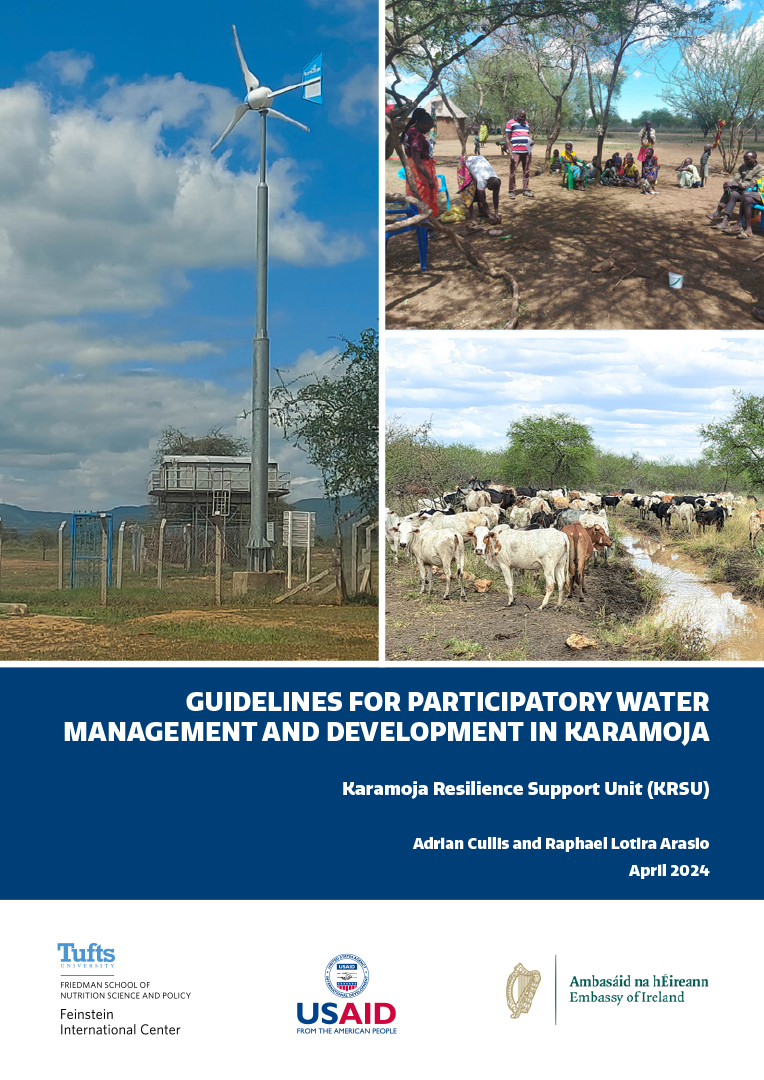This brief summarizes the seasonal patterns of acute malnutrition and its key drivers in the Goz Beida Region of Chad. It reveals a nuanced and complex seasonal pattern of wasting characterized by two different sized peaks with likely different drivers; a primary and larger peak at the start of the rains and a secondary smaller peak prior to the harvest. As well as exploring the basic, immediate, and underlying drivers of acute malnutrition, this briefing paper offers recommendations for programming and evaluation that are grounded in a seasonal perspective.
The findings are based on a two-year mixed methods study, including child monthly panel data and multiple rounds of qualitative inquiry to investigate the peak times across multiple nutrition indicators, child morbidity, water access for humans and animals, migration of humans and animals, water contamination, and hygiene practices along the water chain.
The full report is available here.
The research builds on findings from two studies: Community Resilience to Acute Malnutrition and Building Resilience and Adaption to Climate Extremes and Disasters.
The study is a partnership with Concern Worldwide and aims to inform programming around water, livestock, and nutrition in the Goz Beida area.







